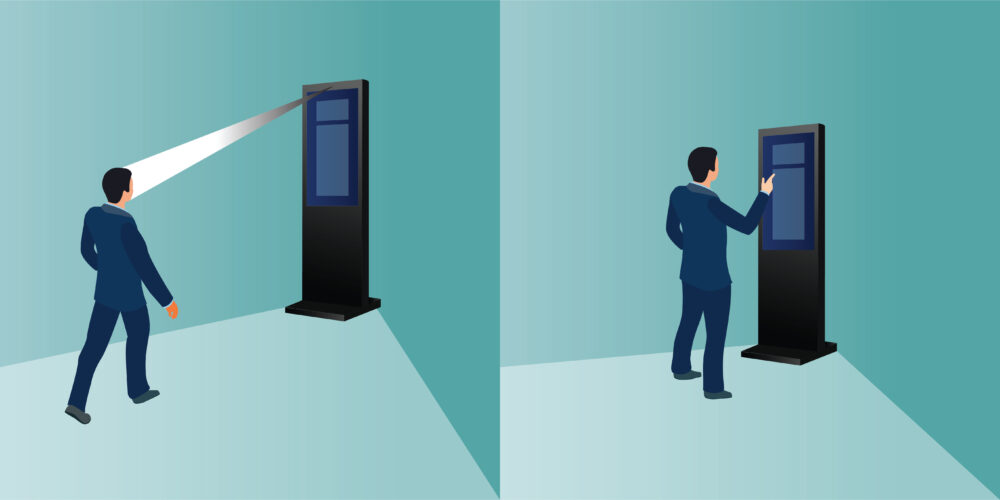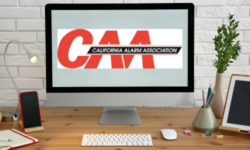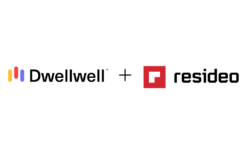Cloud-Based Visitor Management SaaS Solutions Deliver Valuable Benefits Faster
Implementing requirements and solutions through SaaS providers simplifies deployment, reduces acquisition costs and improves compliance.

Adobe Stock image by Jer
With the evolution of enterprise cloud computing, organizations can now use business applications to manage key processes without investing heavily in datacenters, bandwidth or servers.
Organizations are quickly gaining more confidence in the security of their cloud services providers and have found that cloud best practices match or are better than those of on-premises solutions.
Integrators can help their clients move visitor management to the cloud by implementing it through a Software-as-a-Service (SaaS) provider that takes advantage of these best practices.
This also streamlines deployment of new capabilities, such as mitigating the growing risk of workplace violence through a multi-layered security solution with duress-alerting capabilities.
Benefits of SaaS Visitor Management
Visitor management SaaS solutions give organizations the ability to manage visitor traffic without the need for costly and complex in-house systems. They keep organizations safe and compliant at a much lower cost and without the risk of critical information being visible to external threats.
Managing visitor traffic in the cloud also brings many operational benefits. As an example, users can back up information and reports on a facility’s visitor traffic and make it easily available from anywhere to meet compliance reporting requirements — one of the most important roles of a visitor-management system.
The information is safe and always available even in the case of a disaster or technical malfunctions.
SaaS visitor-management solution users can also scale their solutions as their needs grow and evolve. By selecting a long-term solution provider, they can be confident that their implementation can adapt to these evolving needs and integrate with current screening services and access and IT systems.
Examples include Visual Compliance, CCure, Lenel, Azure AD, OKTA, AD Outlook, Google Workspace and more. Integrating with existing systems through a SaaS provider solution ensures that, when information about visitors is already available, they don’t need to fill out forms again and the visitor’s calendar option is always supported.
Another benefit of the SaaS approach is that it reduces the cost of solution acquisition while also eliminating the need for extensive investments and the risk of downtime or infrastructure obsolescence.
Instead, the solution can be updated and configured at any time, supporting the company’s needs without additional any IT department resources. Continuous software updating also avoids disruptions or downtime.
Finally, today’s SaaS visitor management solutions can also provide the foundation for deploying multi-layered workplace safety and security initiatives.
Adding Workplace Safety Protection
An increasingly important benefit of visitor-management solutions is protecting employees against workplace violence. The ability of a visitor-management solution to integrate with and support other services, platforms and compliance requirements makes it the ideal convergence point for workplace safety technologies.
SaaS visitor management solutions take a step further by providing a scalable, cost-effective and easy-to-update approach to improving workplace safety by combining identity, access and visitor management software with ID badges for staff and visitors, and duress-alerting capabilities for these ID badges.
Workplace violence prevention has become an increasingly urgent concern. Some U.S. states have legislated that employers develop a violence prevention program, especially in healthcare.
California Code of Regulations, Title 8, Section 3342, for example, requires healthcare employers to implement violence prevention measures ranging from incident logs and special record keeping to creating a workplace violence prevention plan.
A well-implemented visitor management solution offers the foundation for this type of multilayered security solution. It enables administrators to see and relay information about people and events, from active shooter incidents and subsequent lockdown measures to emergency mustering and ensuring everyone is accounted for during this process.
Because it supports integration with an organization’s HR IT and access control systems, a visitor-management solution also provides the foundation for implementing duress alerting via employee ID badges.
To make duress alerting possible, badge holders are issued to employees that feature discreet buttons for secretly, silently calling for help. This reduces the chance that an attacker might escalate the violence after learning help is on the way.
The buttons are located either on the backside of the badge holder or the sides of a key fob. An LED on the back begins blinking and an alert is sent to the cloud through connected gateways that are generally installed across the campus or building.
The badge holder must be in the range of the gateway to trigger one of many possible policy-based distress-response events.
The third layer of this workplace-safety solution extends situational awareness across more people and the entire building or campus. In the healthcare setting, this takes the form of patient-management devices that are worn around the wrist like a watch and used alongside the duress-alerting badge holders worn by hospital staff.
The result is a complete Real Time Location Service (RTLS) solution for the healthcare environment. The wristbands identify patients and support real-time location applications, streamlining patient admissions through discharge while saving time and money, cutting human error, and increasing patient satisfaction and safety.
Going Beyond the Front Desk App and Tablet
Visitor management now extends well beyond yesterday’s simplistic front desk apps or tablet check-in tools. Many of today’s solutions are completely stand-alone, with no options for enhancing security or supporting compliance.
In contrast, the latest solutions promote customer satisfaction, security, compliance, and safety by managing data, integrating with other internal systems, and providing alerts and reports. They also offer watchlist cross-referencing, preregistration, reporting, emergency alerts and broadcast messages, among other increasingly important functions.
Implementing requirements and capable solutions through a SaaS provider simplifies deployment while reducing acquisition costs, improving compliance, future-proofing investments, offering the scalability to support new requirements, and avoiding downtime and the risk of obsolescence.
These benefits can be maximized by engaging with a proven provider and ensuring that the solution integrates with current HR, IT and access control systems while adhering to key regulatory and other compliance requirements.
Nitin Parihar is director of product management with HID.
If you enjoyed this article and want to receive more valuable industry content like this, click here to sign up for our FREE digital newsletters!

Security Is Our Business, Too
For professionals who recommend, buy and install all types of electronic security equipment, a free subscription to Commercial Integrator + Security Sales & Integration is like having a consultant on call. You’ll find an ideal balance of technology and business coverage, with installation tips and techniques for products and updates on how to add to your bottom line.
A FREE subscription to the top resource for security and integration industry will prove to be invaluable.







